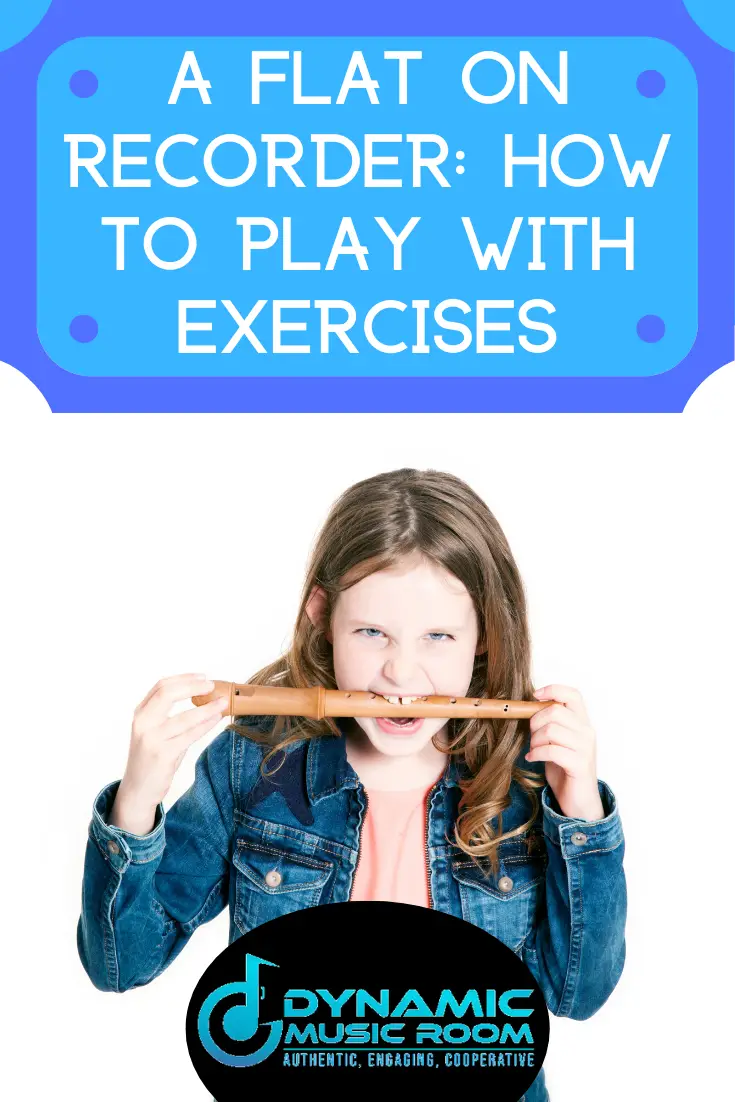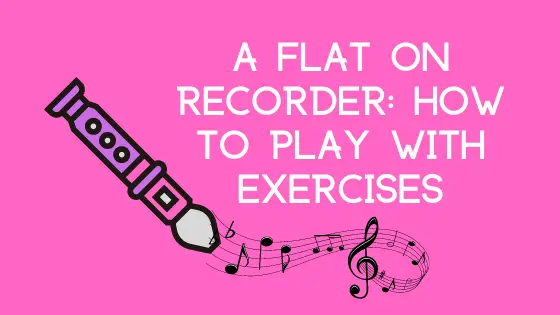Do you want to challenge your recorder playing?
Are you looking to master more accidentals and altered pitches?
Pushing your recorder skills into mastering new notes is a great way to open up your song repertoire into a whole new world.
One of the easiest notes you need to learn at an advanced level is A flat on recorder.
A flat on recorder is played by using your left-hand thumb to cover the thumb hole, pointer and middle on the first two holes, and the right-hand pointer and middle fingers on holes 4 and 5. It’s an A natural with holes 4 and 5 covered.
Look ahead for more details on this note and some practice exercises.
Table of Contents
A Flat On Recorder Fingering Breakdown
The fingering trips up a lot of people at first.
I find it most helpful to start thinking of most recorder accidentals by the natural note above them.
In this case, A flat would be a lowered A.
The fingering for A is the left-hand thumb and first and second holes covered with the pointer and middle fingers.
The flat needs to add more holes being covered, but not in a sequential order as this would make the note go down too far.
Scientifically, you only need to lower the pitch by half instead of a whole step.
For A flat, this means you need to skip a hole and add two more.
All in all, here’s the fingering:
- Left-hand thumb on the back
- LH pointer on the first
- LH middle on the second
- Skip the third
- Right-hand pointer on the fourth
- RH middle on the fifth
Another way to think about it is with numbers. This is how I personally think of recorder fingerings, and many of my students for the past 10 years like to think this way as well.
The numbers would go: Thumb, 1, 2, 4, 5
For those who have mastered F# On the recorder, you may notice a similar pattern.
F# is the same as Gb (G flat). So starting on G, to lower it a half step you do the same pattern as with Ab.
Finger the note, skip a hole, and cover the next two.
Hint: This same pattern works for Bb on recorder as well.

A Flat Or G Sharp?
Some of you may be confused about whether an A flat is the same thing as a G sharp.
The answer is: yes!
These altered notes are called accidentals. Because they live in between the natural notes, they don’t have their own names.
They get their names based on how the notes are related to the original ones.
If the accidental is higher, it’s called a sharp (#). The lowered ones are called flat (b).
The natural notes are A-B-C-D-E-F-G.
Accidental notes exist in between all notes except for B-C and E-F. These are already too close (a half step apart) to have a note in between.
Ab Recorder Exercises
There aren’t a lot of songs out there using only Ab as a new note. Most of the time, the note exists alongside Bb and Eb.
However, this doesn’t mean mastering Ab is only for the naturally talented.
This sheet music contains my favorite exercises for mastering this tricky note.
Tips For Using The Ab on Recorder Exercises
Playing through these exercises will help you improve your skills as is, but there are some tips you may want to keep in mind as you practice.
These are ones I’ve picked up from my own experiences as a musician and from other master performers.
- Start at a slow tempo and gradually speed it up
- Play each exercise until you get it perfect 10x in a row
- Spend more time on the ones you struggle with than the ones that are easy
- Record yourself playing and listen back to it
- Change the dynamics each time you play
- Get louder gradually throughout the exercise
- Get softer gradually throughout the exercises
- Go louder then softer in the middle
- Do the opposite
- Play every note short
- Play every note long
- Alternate long and short style of notes
Do all of these as you want to, but mixing it up will keep you from getting too bored while still developing your skills.
Conclusion
A lot of the trickier songs out there need A flat on recorder, and now you have an idea of where to get started when it comes to mastering this note.
A lot of recorder books are meant for basic and intermediate players and won’t use this note, but there are plenty of songs out there.
If you’re looking for songs and sheet music, I recommend checking out Sheet Music Plus. They have over a million products including recorder music at a ton of different levels.

